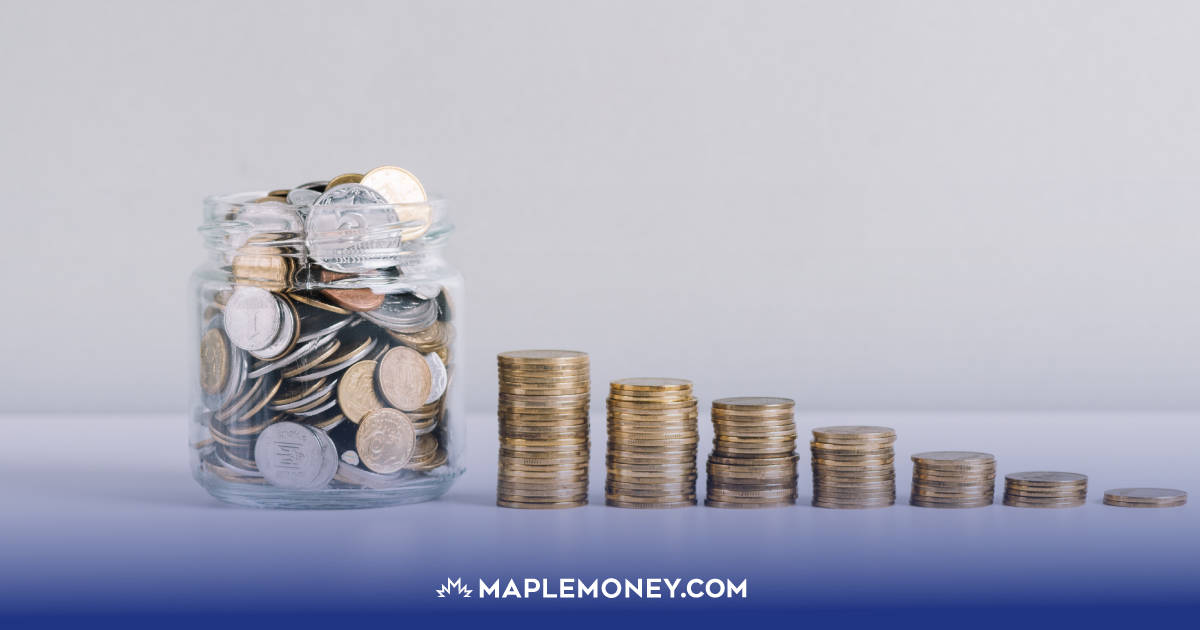What Is Compound Interest? How it Works, Benefits, and How to Calculate

Compound interest is a powerful financial concept that plays a critical role in growing your wealth over time. Compounding refers to the interest that’s calculated on top of the interest you’ve already earned in a savings account or investment. When you combine the benefits of compounding with time, the results can lead to exponential growth, with your investments accumulating faster as time goes on.
But how is compound interest calculated, and what are the benefits? In this article, I’ll explain how compounding works, and I’ll share the different ways it can help you and one way it could hurt.
What Is Compound Interest?
Compound interest refers to the interest that’s calculated on your principal investment amount as well as the interest that’s already been earned.
This type of interest is particularly attractive for long-term investments, as it allows your money to grow at an accelerated rate compared to simple interest. When an investment pays compound interest, the interest you earn is added back to the original sum, and the new, larger balance earns even more interest. Over time, this can lead to exponential growth, with your investment snowballing and accumulating value faster as time goes on.
Simple Interest vs. Compound Interest
It’s important to understand the difference between simple interest and compound interest. Simple interest is calculated only on your principal amount, whereas compound interest is calculated on the principal plus the accumulated interest.
For example, if you purchase a Guaranteed Investment Certificate (GIC) with simple interest, upon maturity, the interest is separated from the principal balance and paid to the investor via a transfer to their bank account, cheque in the mail, etc.
If you purchase a GIC that pays compound interest, the interest is added to the principal balance when it’s paid, and any future interest is calculated on the new principal amount, which includes the original investment and the interest payment.
It’s a minor difference that can make a big impact over time.
How Does Compound Interest Work?
The magic of compound interest becomes more evident the longer you leave your money to grow. It can make a significant difference in the total amount you accumulate over time, especially when you consistently invest additional funds.
One of the key factors affecting the growth of compound interest is the frequency of compounding. Typically, interest can be compounded annually, semi-annually, quarterly, or even daily. The more frequently the interest is compounded, the quicker your investment will grow.
The following example is a simple illustration of compound interest at work:
Let’s say you invest $1,000 at an annual interest rate of 5%. With simple interest, you’d earn $50 each year ($1,000 x 0.05), and after ten years, you’d have $1,500 ($1,000 + $500).
Now, let’s see what happens with compound interest.
When using compound interest, your earnings become part of the principal after each compounding period (typically annually, monthly, or even daily). So, let’s use the same example as before: you invest $1,000 at a 5% annual interest rate. After the first year, you’d earn $50 in interest, just as with simple interest.
But the difference is, now your new principal is $1,050 ($1,000 + $50).
In the second year, you’d earn 5% interest on the new principal of $1,050. This means you’d make $52.50 in interest, and your new principal would be $1,102.50 ($1,050 + $52.50).
This process continues, and by the end of ten years, your investment will have grown to $1,628.89. As you can see, this is significantly more than you would have earned using simple interest.
A Compound Interest Formula
The formula for calculating compound interest is:
A = P(1 + r/n)^(nt)
Where:
- A is the final amount,
- P is the initial principal,
- r is the annual interest rate (as a decimal),
- n is the number of times interest is compounded per year, and
- t is the number of years.
As mentioned, the more frequently interest is compounded, the more your investment will grow. For example, if interest is compounded daily, you’ll earn more than if it’s compounded monthly or annually. And the longer your investment stays put, the more significant the effect of compound interest becomes.
The Benefits of Compound Interest
Compound interest is a powerful tool that can help you grow your savings and investments over time. But while the benefits are overwhelmingly positive, there are limitations. Here’s a closer look at the benefits, and the drawbacks, of compound interest.
Money Growth
When you invest in high-interest savings accounts, money market accounts, mutual funds, or even dividend stocks, your earnings are usually compounded. Over time, even relatively small amounts invested can grow substantially, helping you achieve your financial goals.
Long-Term Benefits
The benefit of compound interest is even more pronounced the longer you invest. The earlier you start saving or investing, the more time compounding has to work its magic. Regular contributions will increase your future value even more.
Taking Advantage of Interest Rates
While interest rates fluctuate due to various factors, such as inflation and market conditions, understanding how compound interest works can help you better navigate your financial situation. By keeping an eye on interest rates and strategically choosing where to invest or save, you can maximize the benefits of compounding.
The Disadvantages of Compound Interest
While compounding interest is considered a powerful tool for wealth generation, it can present challenges when applied to credit products like loans and credit cards.
Your Debt Can Grow More Quickly
When you take out a loan or carry a credit card balance, compound interest works against you. Your interest is calculated not only on the balance owed but also on the interest that has already accrued. This can result in a snowball effect, where your debt grows more quickly, making it harder to pay off.
It Takes Years to Realize the Full Benefit
To truly benefit from compound interest, you must be willing to invest your money for a longer period. It takes time for the effects of compound interest to become noticeable, and in the initial years, the growth may seem slow. You need to be patient and disciplined with your investments to reap the benefits.
The Impact of Market Fluctuations and Inflation
These aren’t drawbacks of compounding interest per se, but external forces such as stock market fluctuations and inflation can impact your overall returns by negating some of the potential gains from compound interest.
How To Maximize Compound Interest
To get the most out of compound interest, follow these four strategies:
Start Saving Early
Saving early is one of the best ways to harness the power of compounding over time. The longer your money has to grow, the more time it has to benefit from compound interest. By starting young, your initial savings can significantly grow over time without requiring much effort from you.
Save Often
Making regular investment contributions gives compound interest more to work with and allows your money to grow even faster. Setting up an automatic savings plan will force you to save and help you build a strong savings habit.
Don’t Withdraw Your Money
As tempting as it may be, try to avoid withdrawing money from your savings or investment accounts. When you take out money from your savings, you are interrupting the compounding process.
Remember, compound interest grows over time, and withdrawing funds will delay the snowballing effect. So try to only tap into your investments or savings when absolutely necessary. The more you let your money grow undisturbed, the greater your compound interest earnings will be.
Pay off Your Debt
If you have balances owing on credit cards or a large loan, do your best to pay off your debt in full. As with investments, the interest charged on most credit products also compounds. By paying off your debt quickly, you’ll save interest and free up cash flow that can be directed to other areas, including your savings.
Conclusion
The key point to understand about compound interest is that it’s calculated on both the principal amount of money and the interest payable or earned on that principal amount. When your investments compound, your money grows at an accelerating rate, often leading to surprising results over the long term.
If you’re unsure how compounding can work for your portfolio, consult with a financial advisor to help you navigate the various investment options available and maximize the power of compound interest.
And remember to stay disciplined in your savings habits – time and consistency are your biggest allies when harnessing the benefits of compound interest.
FAQs
How is compound interest calculated?
Compound interest is calculated on both the principal amount of money, such as a loan or deposit, and on the interest payable or earned on that principal amount. By adding interest to the principal, you create a new, larger base for future interest calculations. The more often interest compounds (monthly vs. yearly), the greater your final return will be.
What is an example of where compound interest is used?
In most savings accounts and Guaranteed Investment Certificates (GICs), the interest paid is compounding, although you can purchase GICs that pay simple interest. When a GIC pays simple interest, it means that the interest is separated from the principal balance at maturity and often paid into a separate account.
What is better, simple or compound interest?
Compounding interest is usually preferable to simple interest. However, there are times when simple interest might be more practical. For example, if your main goal is to receive income from your investments, you can have the interest paid directly into your bank account. Because the interest isn’t added to the investment principal, your money can’t compound. However, you still achieve your main goal, which is to receive income from your investments.

